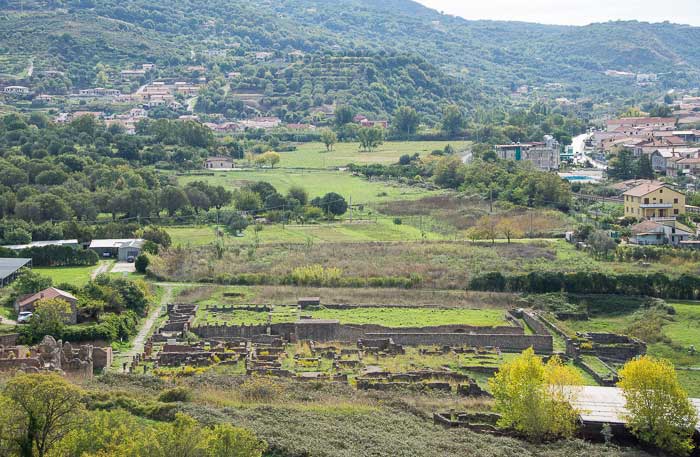Velia is the site of a city founded in 540 BC by the Greeks fleeing the Persian invasion of Ionia. It lies on a promontory overlooking the Tyrrhenian Sea in the Cilento territory of Campania near the modern town of Ascea. Along with the better-known sites of Paestum, the Certosa of Padula, the National Park of Cilento and Vallo di Diano, Velia is the part of this UNESCO World Heritage group you probably haven’t hear of.
After researching the site, I was prepared to be disappointed. There didn’t seem to be too much to see. But a day spent wandering and climbing the various sections of the excavations changed my mind and prompted me to write about the site. Here’s an interesting fact about it. The Porta Rosa, a surprisingly intact northern entrance to the city, shown in the picture below, is the only example of round arch to be found in Greek architecture in Italy.

Now you’re excited, no?
The door is a short walk, some of it uphill, from the acropolis. You don’t hear the word much in Italy. Acropolis in Greek means “The Sacred Rock, the high city”.
The Acropolis has a variety of buildings on it. One of them is this medieval tower, built over a Greek church. It was part of a castle, but only short sections of walls remain, as you can see in the background.

Despite the fact that I think it’s worth its own picture, there is more atop the Acropolis spur:

Yes, there’s the Palatina Chapel on the right—now used as a small museum to house some of the findings from the excavation—the tower, and a small theater that dates back to the 3rd century BC. Just down the spur there’s another little museum. Treasures everywhere!
Just below the acropolis are the remains of the site’s oldest houses. A bit down the hill are the thermal baths and some frescoed buildings.
The main site would have been closer to the sea except for that phenomenon that always seems to beset ancient port cities, the silting up of the port area, which is now a blue-flag beach at the edge of Ascea Marina.
Here’s the lower part of the city and its surroundings:

Velia was noted for being tops in the fields of philosophy and medicine. It was the site of the School of Philosophy founded by Parmenides and Zeno.
Velia became a Roman city in 88 BC.
Your visit will include some trails, some uphill walking, and some confusion as the signage isn’t the best. But don’t give it a pass if you like ancient sites.
Map of the Velia Acropolis
Getting to Velia
There is a train station in Ascea Marina, but it’s about 1.6 miles from the excavations. By car, you can travel south from the Cilento’s largest town Agropoli, which we recommend as a base for exploration of the Cilento, on an Itinerary that includes a short stop in the hill town of Castelebate ending at the Velia excavations.